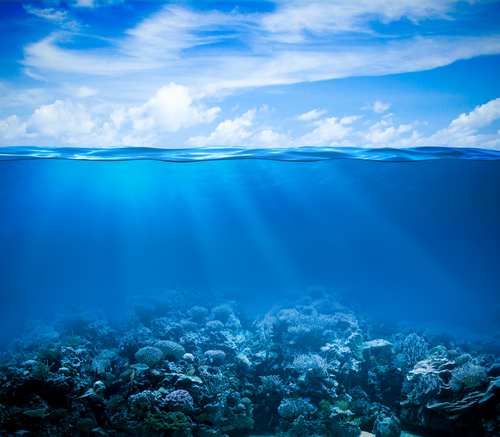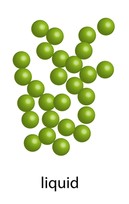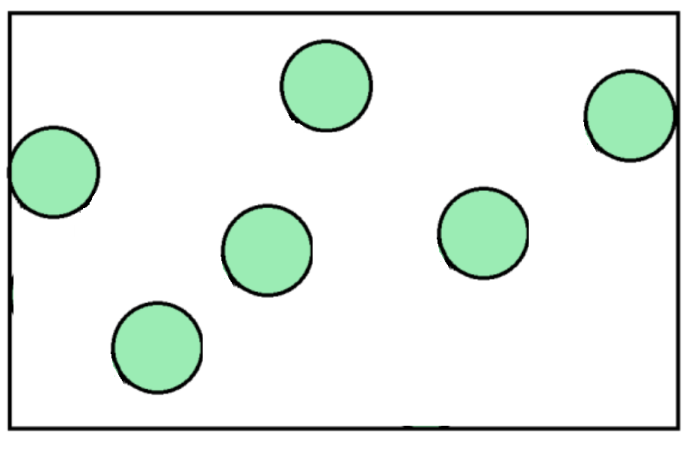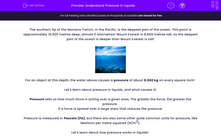The southern tip of the Mariana Trench, in the Pacific, is the deepest part of the ocean. This point is approximately 10,925 metres deep, almost 11 kilometres! Mount Everest is 8,849 metres tall, so the deepest part of the ocean is deeper than Mount Everest is tall!

For an object at this depth, the water above causes a pressure of about 8,000 kg on every square inch!
Let's learn about pressure in liquids, and what causes it!
Pressure tells us how much force is acting over a given area. The greater the force, the greater the pressure.
If a force is spread over a large area, that reduces the pressure.
Pressure is measured in Pascals (Pa), but there are also some other quite common units for pressure, like Newtons per metre squared (N/m2).
Let's learn about how pressure works in liquids!

Liquids and gases are sometimes called fluids. That's because gases and liquids have no fixed shape as solids do.
What do the particles in a liquid look like?

In a liquid, particles are close together. They are not arranged in a pattern, and the particles can move around and over each other.
In a liquid, like water, the particles can move around. They collide with each other, and with surfaces, and this is what causes liquid pressure.
Look again at the particle diagram for a liquid. How does it compare with the particle diagram for a gas?

In a gas, the particles are much more spread out. Because of this, we can compress gases (squash them into smaller containers so they take up less volume).
Liquids are incompressible - they cannot be compressed. This is because the particles in a liquid are already so close together.

If you filled a syringe with water, and sealed the end, you would not be able to compress the liquid by pushing on it, but you would be able to if the syringe was filled with air instead.
Liquid pressure acts in all directions. Imagine filling a balloon with water, and then adding holes all over the surface of the balloon. Next, imagine squeezing the balloon. Water would get pushed out of the holes because of the liquid pressure. The water would come out of the holes in all directions because pressure works in all directions.
Now that we have learnt about pressure in liquids, let's try some questions!








